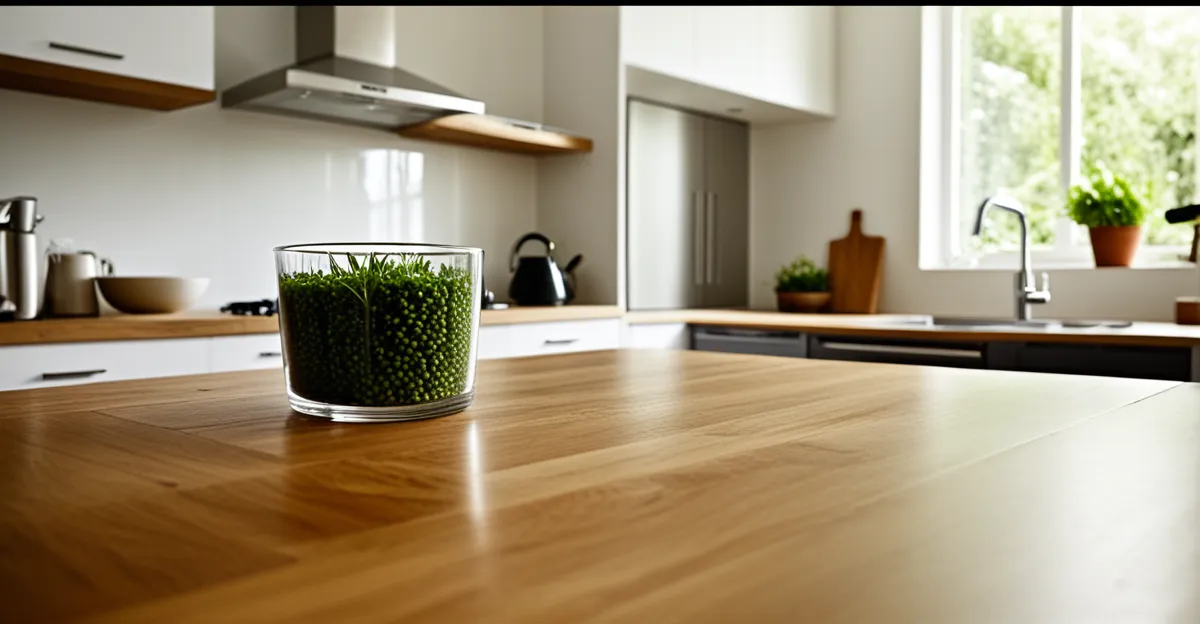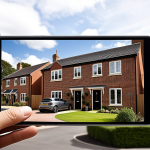Immediate Financial Benefits of Sustainable Home Practices
Adopting sustainable living savings can directly lead to significant financial benefits by lowering day-to-day expenses. When households focus on reducing energy and water waste, they often see clear drops in utility bills. For example, switching to energy-efficient lighting or fixing leaks not only helps the environment but also reduces household expenses quickly.
Short-term savings come from simple changes like using LED bulbs or installing low-flow showerheads, both affordable and effective measures. Over the long term, investing in durable eco-friendly appliances or solar panels continues to pay off by lowering ongoing costs for electricity and water. Studies show that households embracing sustainable practices can reduce their utility bills by 20-30%, reflecting measurable expense decreases.
Also to see : How Can Modern Home Design Enhance Our Quality of Life in the UK?
Implementing water and energy conservation strategies, coupled with choosing sustainable products, creates a budget-friendly home environment. These steps reveal the practical financial benefits of sustainable living beyond just environmental impact. In doing so, homeowners can enjoy both immediate savings and future financial security through smarter resource use and lower dependence on costly utilities. The clear takeaway: embracing sustainable home practices is as much a savvy financial move as a responsible ecological one.
Energy Efficiency Strategies That Cut Costs
Boosting energy efficiency is one of the most effective ways to achieve household savings and realize tangible financial benefits. Start with practical energy-saving tips like swapping out incandescent bulbs for LEDs. LED lighting consumes up to 80% less electricity and lasts significantly longer, contributing to sustainable living savings by lowering your energy bills almost immediately.
Also read : How Can You Transform Urban Apartments into Cozy Homes with Minimal Effort?
Another crucial step is upgrading to energy-efficient appliances. Modern refrigerators, washing machines, and HVAC systems bearing the Energy Star label can use 10-50% less energy than older models, translating directly to reduced utility expenses. These improvements not only reduce household expenses but also help households meet long-term savings goals through lower maintenance and energy costs.
Sealing gaps around windows and doors and adding insulation are equally impactful. These adjustments minimize heating and cooling losses, often reducing related bills by up to 20%. Such techniques are fundamental in creating a more sustainable home while maximizing energy efficiency.
Implementing these strategies takes an initial investment but pays off through measurable financial benefits. By focusing on energy efficiency, homeowners can enjoy a comfortable living environment alongside consistent sustainable living savings.
Energy Efficiency Strategies That Cut Costs
Energy efficiency offers one of the most direct routes to household savings and sustainable living savings. Implementing simple energy-saving tips such as switching to LED lighting can reduce energy consumption dramatically—LEDs use up to 85% less energy than traditional bulbs and last much longer. Smart thermostats are another effective tool, optimizing heating and cooling schedules based on occupancy, which can reduce utility bills by 10-15%.
Upgrading to energy-efficient appliances certified by ENERGY STAR or similar programs leads to substantial financial benefits by lowering electricity use without sacrificing performance. For instance, ENERGY STAR refrigerators use 9-10% less energy than conventional models. While the upfront cost may be higher, the long-term savings through reduced energy demand help to quickly offset the investment.
Sealing cracks and adding insulation are crucial yet often overlooked energy efficiency strategies. Proper insulation stabilizes indoor temperatures, which cuts heating and cooling expenses significantly—sometimes by 20% or more. These improvements contribute to reducing household expenses by decreasing the strain on HVAC systems, improving comfort, and ensuring that money spent fuels home efficiency rather than wasting energy.
Together, these energy efficiency strategies create a foundation for sustainable living savings while delivering tangible financial benefits. They combine practical upgrades with behavioral changes to maximize household savings immediately and in the long run.
Water Conservation Techniques for Lower Utility Bills
Water conservation offers a straightforward path to household water savings and noticeable sustainable living savings by cutting down on water use and thereby reducing utility bills. One of the most effective strategies is installing low-flow fixtures—such as showerheads and faucets—that maintain strong water pressure while using significantly less water. Efficient toilets, especially those with dual-flush options, also drastically reduce water consumption in everyday use, contributing to measurable financial benefits.
Greywater systems provide another impactful solution by repurposing gently used water from baths, sinks, or washing machines for irrigation or toilet flushing. This reduces reliance on fresh water supplies and maximizes home water efficiency. Rainwater harvesting further complements these efforts by collecting rainwater for outdoor use, which lowers water bills and supports sustainable home practices year-round.
Beyond hardware upgrades, cultivating water-wise daily habits—like turning off taps when brushing teeth or fixing leaks promptly—reinforces water conservation. These actions collectively help reduce household expenses by limiting wasted resources.
Combining these water conservation techniques establishes a practical and budget-friendly approach to lowering utility bills. Their cumulative effect leads to clear financial benefits while supporting environmentally responsible living.
Water Conservation Techniques for Lower Utility Bills
Water conservation is a critical strategy for achieving household water savings and reducing overall expenses. One effective method is installing low-flow fixtures and efficient toilets. These devices use significantly less water per use, cutting water bills without sacrificing performance. For instance, replacing traditional showerheads with low-flow variants can save up to 30% on water consumption immediately, translating into clear sustainable living savings.
Adopting greywater systems further enhances water efficiency by recycling gently used water from sinks or showers for outdoor irrigation. This practice decreases dependency on freshwater supply and contributes to financial benefits by lowering water usage. Similarly, rainwater harvesting collects natural precipitation, reducing the need for municipal water in garden care while supporting sustainable home practices.
Beyond hardware, changing daily routines is impactful. Simple habits like turning off taps when brushing teeth or using a dishwasher only with full loads help reduce household expenses. Consistently applying these water conservation habits, combined with efficient fixtures, yields both immediate and ongoing utility bill reductions. Embracing comprehensive water-saving techniques demonstrates how mindful water use aligns with economic practicality and environmental responsibility, providing homeowners with reliable avenues for lowering costs.
Waste Reduction for Budget-Friendly Living
Reducing waste is a vital strategy to achieve cost-effective sustainability and consistently reduce household waste. By minimizing trash output, households can lower refuse disposal fees and avoid unnecessary spending on single-use products. Composting at home is a powerful way to turn organic waste into valuable fertilizer. This not only slashes waste volume but also benefits gardening, cutting costs on fertilizers and soil enhancers.
Another impactful approach is reusing and repurposing materials. Items like glass jars, old fabrics, and cardboard boxes can be creatively given new life, reducing the need to purchase replacements. This practice supports sustainable living savings by turning potential waste into budget-friendly resources.
Choosing reusable over disposable household items can lead to meaningful financial benefits. Stainless steel water bottles, cloth shopping bags, and washable kitchen cloths may require an upfront investment, but their long life diminishes ongoing expenses. Additionally, reducing food waste by planning meals and preserving leftovers directly decreases grocery bills, further contributing to reduce household expenses.
Incorporating waste reduction not only lightens environmental impact but also strengthens financial resilience. It demonstrates how careful consumption and smart habits align to make cost-effective sustainability both practical and rewarding.
Waste Reduction for Budget-Friendly Living
Reducing waste is a powerful way to achieve cost-effective sustainability while helping to reduce household expenses. Composting at home transforms food scraps into nutrient-rich soil, cutting down on garbage disposal costs and lessening landfill impact. Household composting not only diverts organic waste but also supports a garden or indoor plants, providing a cycle of saving and reuse.
Minimising food waste by planning meals and storing leftovers properly directly lowers grocery expenses, contributing to clear financial benefits. Food waste reduction is often overlooked but offers immediate sustainable living savings by maximizing the value of purchased groceries.
Reusing and repurposing materials further reduces spending by avoiding frequent purchases of new items. For example, using glass jars for storage or upcycling furniture extends product life and saves money. This approach promotes mindful consumption and decreases overall waste generation.
Choosing reusable items, such as cloth napkins instead of disposable paper, creates ongoing savings and reduces dependency on single-use products. These sustainable alternatives often have a modest upfront cost but lead to significant cost-effective sustainability over time. Collectively, waste reduction strategies provide a practical, budget-friendly framework for households seeking to lower expenses while embracing greener living.
Immediate Financial Benefits of Sustainable Home Practices
Sustainable living savings arise from deliberate efforts to reduce household expenses through eco-friendly choices. Cost reductions often begin with energy efficiency and water conservation measures, which directly impact monthly utility bills. For example, adopting energy-saving behaviors and installing efficient appliances can cut electricity and water use significantly, resulting in tangible financial benefits.
Short-term savings come from affordable switches like LED lighting, low-flow showerheads, or sealing drafts to curb heating loss. In the long term, investments in durable eco-friendly products such as solar panels or energy-efficient HVAC systems amplify savings by continuously lowering utility costs. Research shows households practicing sustainability can reduce utility expenses by up to 30%.
Such measurable expense decreases demonstrate that sustainable living is financially practical. Beyond the environment, these savings create greater budget flexibility and reduce dependence on rising utility rates. Homeowners gain increased control over ongoing costs while supporting broader ecological goals. By strategically implementing sustainable home practices, families unlock immediate financial benefits that reinforce a healthier bottom line and foster long-term economic resilience.
Immediate Financial Benefits of Sustainable Home Practices
Adopting sustainable living savings starts with simple actions that immediately reduce household expenses. For instance, cutting down electricity use by turning off unused appliances directly lowers energy bills, delivering quick financial benefits. Similarly, fixing water leaks curtails unnecessary water waste, producing instant savings on water charges.
Cost reductions through energy efficiency and water conservation often yield both short-term and long-term financial gains. While switching to LED lighting or low-flow faucets might require modest upfront costs, the resulting lower utility bills quickly offset these expenses. Over time, investing in durable eco-friendly products, such as high-efficiency appliances or solar water heaters, enhances sustainable living savings by continually reducing monthly costs.
Studies reveal households embracing these practices see measurable expense decreases—some report utility bills dropping by up to 25%. This demonstrates how combining multiple sustainable techniques compounds savings effectively.
Ultimately, the immediate financial benefits of sustainable home practices come from actively choosing solutions that reduce resource consumption. Every small action contributes not just to environmental health but also to stronger budget management, making sustainable living both economically practical and rewarding.
Immediate Financial Benefits of Sustainable Home Practices
Implementing sustainable living savings begins with focused efforts to reduce household expenses through energy efficiency and water conservation. For example, adopting energy-saving behaviors like turning off unused appliances and fixing leaks can lower utility bills almost immediately, demonstrating clear financial benefits.
Short-term savings come from affordable upgrades such as switching to LED bulbs, installing low-flow showerheads, or sealing air leaks. These actions deliver quick reductions in energy and water use, providing noticeable decreases in monthly bills. Longer-term investments, like solar panels or energy-efficient HVAC systems, may require upfront costs but yield sustained sustainable living savings by continuously lowering utility expenses over years.
Statistics reinforce this impact: households applying these practices can expect to reduce utility costs by 20-30%, directly enhancing budget flexibility and economic resilience. Such financial benefits make sustainable choices more than just environmentally sound—they represent strategic economic decisions to control rising energy and water costs.
By blending immediate changes with strategic investments in eco-friendly products, homeowners unlock measurable expense decreases that validate sustainable living as a practical approach to lowering overall household costs.








